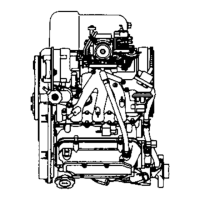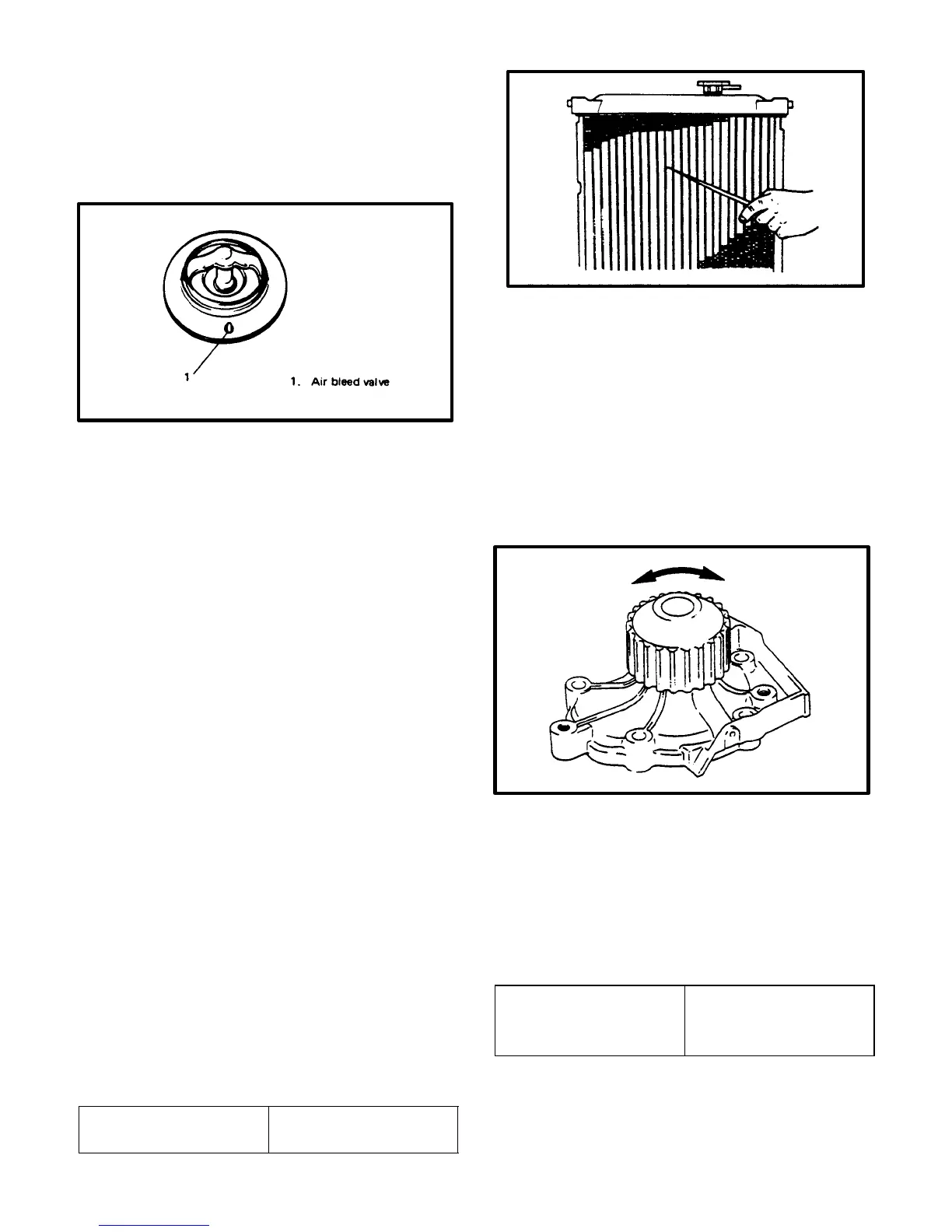140
INSPECTION OF COMPONENTS
Thermostat
1) Make sure that the air bleed valve of thermostat is
clear. Should this valve be clogged, engine would tend
to overheat.
2) Check valve seat for some foreign objects being stuck
which might prevent valve from seating tight.
NOTE:
Check interference between water tempature sensor
and thermostat.
3) Check thermostatic movement of wax pellet as fol-
lows:
Immerse thermostat in water, and heat
water gradually.
Check the the valve starts to open at speci-
fied temperature.
If valve starts to open at a temperature
substantially below or above specification,
thermostat unit should be replaced with a
new one. such a unit, if re–used, will bring
about overcooling or overheating ten-
dency.
Radiator
If water side of the radiator is found excessively rusted
or covered with scales, clean it by flushing with radiator
cleaner compound. This flushing should be carried out
at regular intervals due to scale or rust formation advanc-
ing with time.
Inspect radiator cores and straighten any flattened or
bent fins. Clean cores, removing dirt and any debris.
Excessive rust or scale formation inside of radiator low-
ers cooling efficiency. Flattened or bent fins obstruct flow
of air through the core to impede heat dissipation.
Radiator Flushing
Interval
Two years
(recommended)
Water Pump
NOTE:
Do not disassemble water pump.
If any repair is required on pump, replace it as an
assembly.
Rotate water pump by hand to check for
smooth operation.
If pump does not rotate smoothly or makes an abnormal
noise, replace it.
IMPORTANT STEPS FOR REINSTALLA-
TION
Water Pump
1) Install new pump gasket to cylinder block.
2) Install water pump to cylinder block.
Tightening torque for
nuts and bolts
9–12 n–m
0.9–1.2 kg–m
7.0–8.5 lb–ft.
3) Remove cylinder head cover and loosen all valve
adjusting screws of intake and exhaust rocker arms fully.
4) Install belt tensioner, tensioner spring, timing belt and
outside cover.

